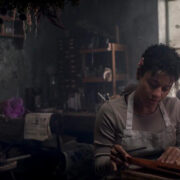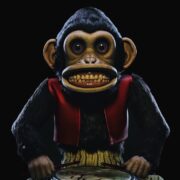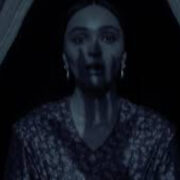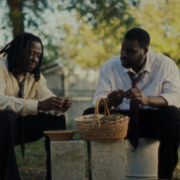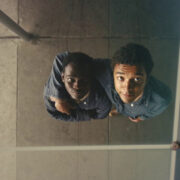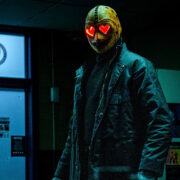A WOMAN IS A WOMAN and Anna Karina is an Icon

Lee Jutton has directed short films starring a killer toaster,…
Jean-Luc Godard may have burst into the cultural consciousness in an explosion of gunfire and jump cuts with Breathless, but he claimed that A Woman is a Woman—his third feature to be shot and his second to be released in theaters—was his first real film. According to Godard, “The overall conception of the film came from something Chaplin said: that tragedy is life in close-up, and comedy, life in long shot. I said to myself, I’m going to make a comedy in close-up: the film will be tragicomic.” Not a musical itself so much as a stylish and energetic homage to the genre, A Woman is a Woman introduced the world to the actress who would come to embody the Godardian woman: a Danish-born model called Anna Karina. Now available in a new 4K restoration produced from the original 35mm negative and sound negative, A Woman is a Woman has never looked or sounded better—but Karina’s effervescent charm remains the film’s most valuable asset and the main reason it deserves to be revisited.
Love Me or Leave Me
Karina is Angela, a beautiful stripper in a seedy Parisian club who fantasizes about being in “a musical comedy starring Cyd Charisse and Gene Kelly…choreography by Bob Fosse!” She lives in a little flat with her partner, bookshop proprietor Emile (Jean-Claude Brialy), fends off the advances of the couple’s close friend, Alfred (Jean-Paul Belmondo), and plans to have a baby as soon as possible. When Emile tries to postpone starting a family, the furious and impatient Angela asks him how he would feel if she got pregnant by someone else instead. He tells her to go ahead, and the film becomes a war of wills between two stubborn lovers, including a delightfully clever sequence in which they conduct a silent argument by holding up books with carefully chosen titles.
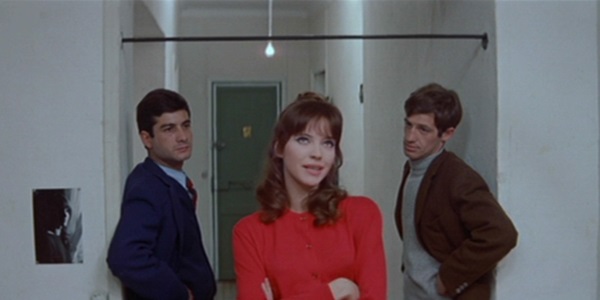
Naturally, the most obvious candidate to impregnate Angela is the charming Alfred, to whom Godard gives the surname Lubitsch in honor of the auteur whose sexy and sophisticated romantic comedies like Design for Living and Trouble in Paradise paved the way for the bed-swapping shenanigans that unfold in A Woman is a Woman. But Angela and Emile’s genuine love and affection for each other cannot be so easily put aside, even as the situation in their shared flat grows more and more difficult to manage. In his book Everything is Cinema: The Working Life of Jean-Luc Godard, Richard Brody claims that this was a reflection of the domestic turmoil that was already assailing Godard and Karina before their marriage:
“Like Godard and Karina, the film’s main characters, a man who is something of an intellectual and a woman who is an entertainer, a person of the body, formed a yet-unmarried couple… In the film, Godard revealed the emotional and artistic fault lines that threatened their relationship, and the diagnosis would prove painfully prophetic.”
This may have been the first time Godard infused a film with their real-life romantic struggles but it certainly wouldn’t be the last; he was still writing female characters inspired by his issues with Karina and infused with a hefty dose of misogyny—beautiful women who would charm you and then betray you—long after their relationship crashed and burned.
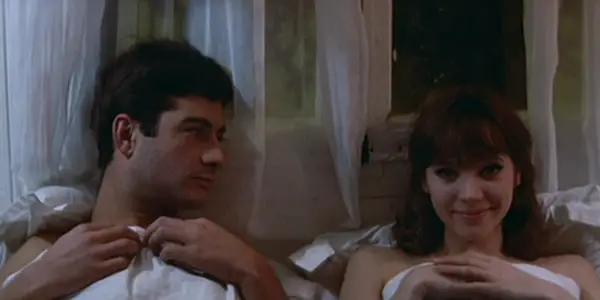
A Star is Born
A Woman is a Woman was Godard’s first film to be shot in Cinemascope, the first to be shot in color, and the first in which the public got to see Anna Karina on screen. And while Brialy and Belmondo are game as the male points of the love triangle, this is Karina’s movie, and it made her an instant star. It’s easy to see why: Karina’s natural beauty—all the more remarkable when compared to the glossy skin and capped teeth of most modern starlets—lights up every frame she’s in, which is most of them, and her bubbly energy is infectious. (The only twenty-first-century comparison that comes close is Mikey Madison’s glittering starburst of a turn in Anora, a character you can imagine working alongside Angela at the club.) Witty and lovely, you understand why every man in the movie is madly in love with Angela even as they are frustrated by what they (and Godard) see as her capriciousness. It doesn’t hurt that she is also an absolute style icon: from the sailor ensemble she dons for her striptease, to the oversized red cardigan she wears both frontward and backward, to the blue dress with white fur trim that gives her the glamour of an MGM musical comedy star…the first time I saw this movie I wanted every single outfit in it, and I still do today.
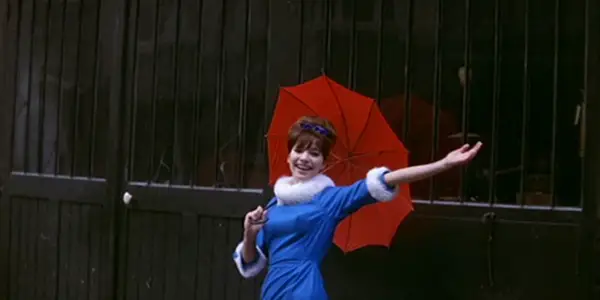
Godard pays tribute to glossy studio musicals in A Woman is a Woman the same way he pays tribute to gritty film noir in Breathless: taking recognizable tropes and twisting them into something new and exciting. While the film doesn’t exactly have traditional song and dance numbers, music still looms large throughout, with characters humming along to themselves, turning on radios, and pumping coins into jukeboxes. Godard and editors Agnès Guillemot and Lila Herman alternate between shots with direct sound and shots with music dubbed in, repeatedly pulling the audience back and forth between the stark reality of life and the glorious fantasy of cinema. (The original score is by Michel Legrand, the official composer of flights of fancy everywhere.) Legendary cinematographer Raoul Coutard—he of pretty much every French New Wave film worth remembering—captures it all in vibrant color, with the first emergence of the reds and blues that one would come to associate with Godard films like Pierrot le Fou and Made in U.S.A. Still, none of the cinematic craft on display in would be as successful without Karina at its center, even in the hands of a master such as Godard.
Conclusion
Anna Karina’s iconic performance goes a long way towards making A Woman is a Woman one of Godard’s most accessible movies; she invites you in and ensures you stick along for the ride, occasionally jarring musical interjections be damned.
The new 4K restoration of A Woman is a Woman opens at Film Forum in New York on February 7, 2025.
Does content like this matter to you?
Become a Member and support film journalism. Unlock access to all of Film Inquiry`s great articles. Join a community of like-minded readers who are passionate about cinema - get access to our private members Network, give back to independent filmmakers, and more.
Lee Jutton has directed short films starring a killer toaster, a killer Christmas tree, and a not-killer leopard. Her writing has appeared in publications such as Film School Rejects, Bitch: A Feminist Response to Pop Culture, Bitch Flicks, TV Fanatic, and Just Press Play. When not watching, making, or writing about films, she can usually be found on Twitter obsessing over soccer, BTS, and her cat.


